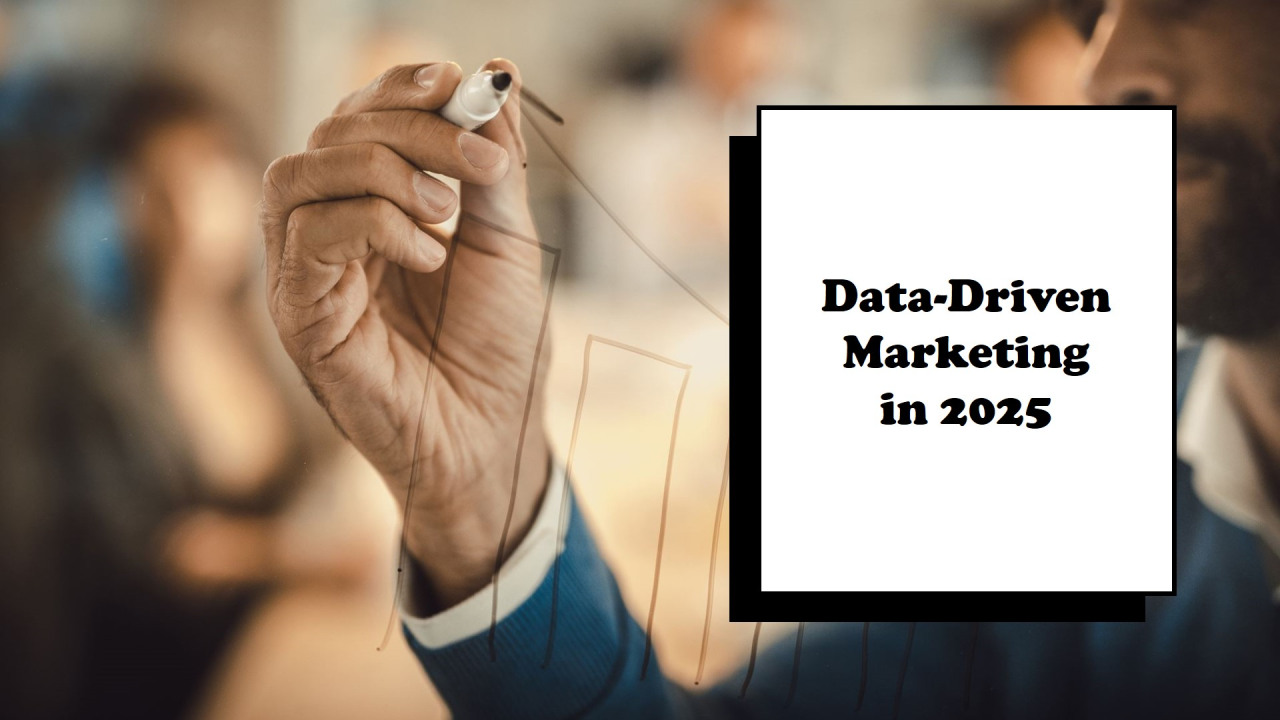Marketing has evolved from intuition-based decision-making to a highly analytical, data-driven approach. Today, businesses that leverage data effectively gain a competitive edge by understanding consumer behavior, optimizing marketing spend, and enhancing customer experiences.
According to a report by McKinsey, companies that use data-driven marketing strategies are 23% more likely to exceed revenue targets compared to those that rely on traditional methods. In 2025, data-driven marketing is not just an option; it is a necessity.
This article explores the most impactful data-driven marketing trends for 2025, why they matter, and how businesses can implement them to stay ahead.

1. AI-Powered Predictive Analytics: The Future of Decision-Making
Artificial intelligence (AI) and machine learning (ML) are transforming marketing strategies by predicting customer behavior, identifying trends, and optimizing campaigns in real-time.
Why It Matters
- AI-powered predictive analytics helps businesses anticipate customer needs and personalize experiences.
- A study by Forrester found that 70% of businesses using AI-driven marketing saw improved customer engagement.
- AI tools can analyze vast datasets, uncover hidden patterns, and suggest actionable insights for marketing teams.
How to Implement
- Use AI-powered platforms like Google Analytics 4, HubSpot, and IBM Watson for customer insights.
- Leverage AI-driven chatbots and recommendation engines to enhance user experience.
- Implement predictive lead scoring to prioritize high-value prospects.
2. First-Party Data: A Privacy-First Approach
With increasing privacy regulations and the phasing out of third-party cookies, first-party data has become a critical asset for businesses.
Why It Matters
- 80% of marketers say they are moving towards a first-party data strategy due to privacy concerns (Forrester, 2024).
- Google’s planned cookie deprecation in 2025 will make first-party data essential for personalized advertising.
- Consumers are more likely to engage with brands that transparently collect and use their data.
How to Implement
- Build a robust customer relationship management (CRM) system to store and analyze first-party data.
- Encourage users to opt-in through loyalty programs, email subscriptions, and interactive content.
- Use server-side tracking and consent-based data collection for better compliance.
3. Hyper-Personalization: Delivering Customized Experiences
Hyper-personalization goes beyond segment-based marketing by using real-time data to tailor content, recommendations, and offers for individual users.
Why It Matters
- Personalized marketing increases customer engagement by 80% (Econsultancy, 2024).
- AI-powered hyper-personalization can boost conversion rates by up to 202%.
- Consumers expect brands to understand their preferences and deliver relevant experiences.
How to Implement
- Use dynamic content in emails, websites, and ads to personalize user interactions.
- Leverage behavioral data to recommend products or services tailored to each user.
- Implement chatbots and AI-driven assistants to provide personalized support.
4. Real-Time Data and Adaptive Marketing
With the rise of automation and real-time analytics, marketing strategies must be agile and adaptable to market shifts.
Why It Matters
- Brands using real-time data see a 56% increase in customer engagement (Salesforce, 2024).
- Adaptive marketing allows businesses to respond instantly to consumer behavior, competitor actions, and industry trends.
- Real-time data helps in reducing ad spend waste by optimizing campaigns instantly.
How to Implement
- Use Google Trends and social listening tools to track real-time consumer interests.
- Invest in automated marketing platforms like Marketo or HubSpot to adjust campaigns dynamically.
- Employ A/B testing tools to continuously refine messaging and user experience.

5. Data-Driven SEO: The Shift to User Intent Optimization
Search engine optimization (SEO) is no longer just about keywords. Google’s AI-driven algorithms prioritize user intent, content relevance, and experience.
Why It Matters
- SEO-driven content marketing generates 3X more leads than paid advertising (HubSpot, 2024).
- Voice search and AI-generated search results are influencing how users interact with search engines.
- Google’s E-E-A-T (Experience, Expertise, Authority, Trust) guidelines emphasize high-quality, authoritative content.
How to Implement
- Focus on search intent rather than just keywords.
- Optimize for voice search by using natural language and question-based queries.
- Use data analytics tools like Semrush, Ahrefs, and Google Search Console to track performance.
6. Marketing Automation: Streamlining Data-Driven Campaigns
Automation enables businesses to execute marketing strategies efficiently while leveraging data insights for personalization.
Why It Matters
- Automated campaigns generate 320% more revenue than non-automated ones (Gartner, 2024).
- Businesses save time and resources by automating email marketing, social media, and lead nurturing.
- AI-powered automation ensures better segmentation and targeting.
How to Implement
- Utilize marketing automation platforms like ActiveCampaign, Pardot, and HubSpot.
- Automate email workflows, chatbots, and customer segmentation for improved engagement.
- Use predictive analytics to refine marketing strategies dynamically.
7. The Role of Data Ethics and Compliance in Marketing
As businesses collect more consumer data, maintaining transparency and ethical marketing practices is crucial.
Why It Matters
- 72% of consumers say they trust brands more when they are transparent about data use (Adobe, 2024).
- Compliance with GDPR, CCPA, and upcoming privacy laws is mandatory for global businesses.
- Brands that prioritize data security and ethical practices build long-term trust and loyalty.
How to Implement
- Clearly communicate data collection and usage policies to customers.
- Invest in privacy-compliant marketing tools and secure data storage systems.
- Regularly update data protection policies and train teams on compliance best practices.
Conclusion: Preparing for a Data-Driven Future
The digital marketing landscape in 2025 will be dominated by AI-driven analytics, first-party data, hyper-personalization, and real-time marketing strategies. Businesses that fail to adapt risk losing market share to data-savvy competitors.
To succeed, companies must embrace automation, prioritize customer privacy, and leverage predictive analytics for data-driven decision-making.
At One Technology Services, we believe that understanding and utilizing data-driven marketing trends is the key to business growth. By implementing these insights, businesses can enhance their digital strategies, optimize customer engagement, and drive sustainable success in 2025 and beyond.
Would you like to explore how data-driven marketing can be tailored for your business needs? Stay updated with the latest marketing trends and strategies by following industry insights and best practices.
Read More:
10 Important B2B Marketing Stats Everyone Should Know
How to Audit Your Current Digital Marketing Strategy with Professional Services
Maximizing Your Email Marketing ROI: 8 Strategies for Better Returns
How to Leverage Social Media Marketing for Small Business Success
Digital Marketing: A Practical Guide to Building Success Online

